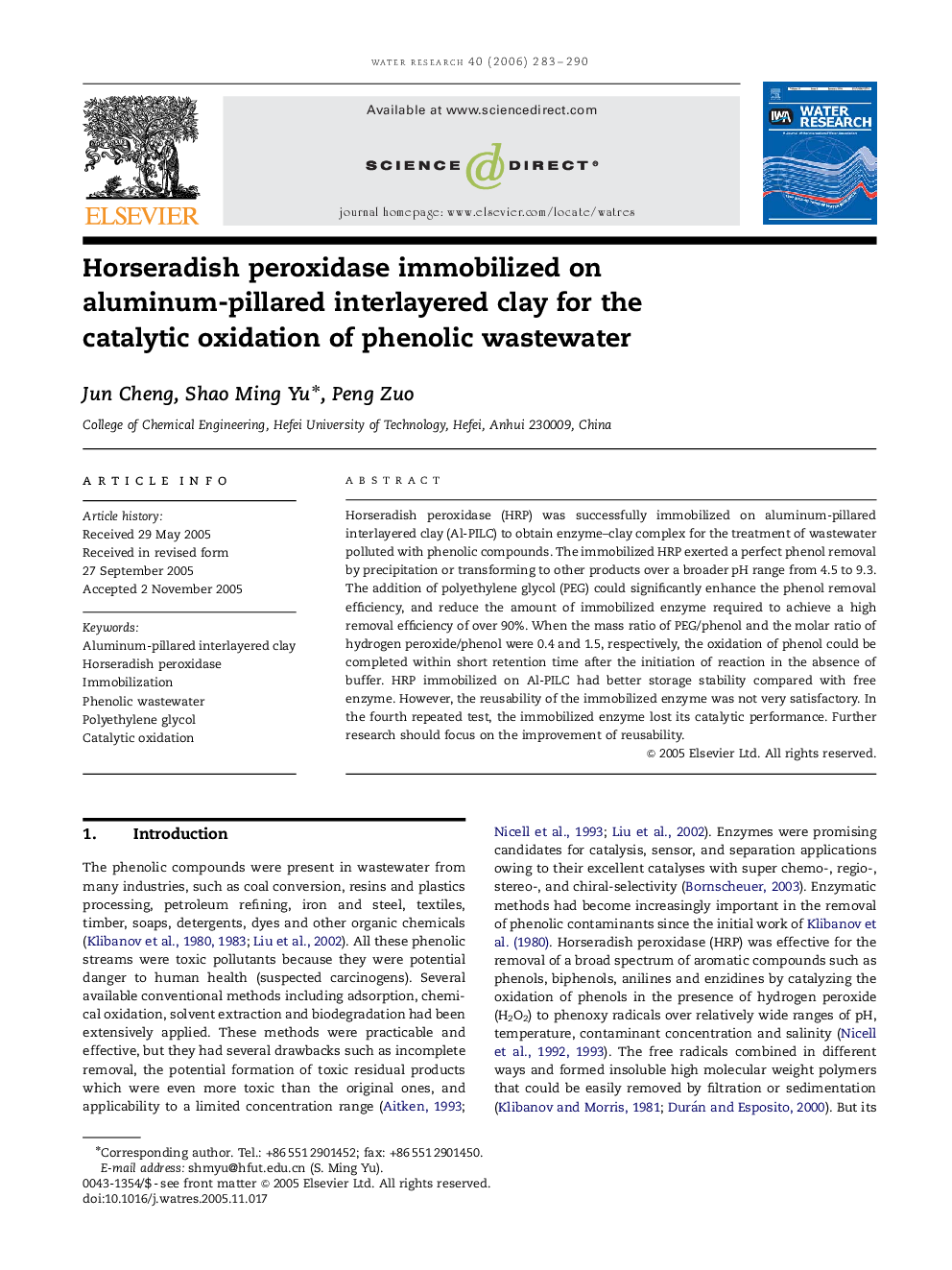| Article ID | Journal | Published Year | Pages | File Type |
|---|---|---|---|---|
| 4487290 | Water Research | 2006 | 8 Pages |
Horseradish peroxidase (HRP) was successfully immobilized on aluminum-pillared interlayered clay (Al-PILC) to obtain enzyme–clay complex for the treatment of wastewater polluted with phenolic compounds. The immobilized HRP exerted a perfect phenol removal by precipitation or transforming to other products over a broader pH range from 4.5 to 9.3. The addition of polyethylene glycol (PEG) could significantly enhance the phenol removal efficiency, and reduce the amount of immobilized enzyme required to achieve a high removal efficiency of over 90%. When the mass ratio of PEG/phenol and the molar ratio of hydrogen peroxide/phenol were 0.4 and 1.5, respectively, the oxidation of phenol could be completed within short retention time after the initiation of reaction in the absence of buffer. HRP immobilized on Al-PILC had better storage stability compared with free enzyme. However, the reusability of the immobilized enzyme was not very satisfactory. In the fourth repeated test, the immobilized enzyme lost its catalytic performance. Further research should focus on the improvement of reusability.
